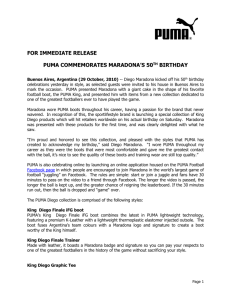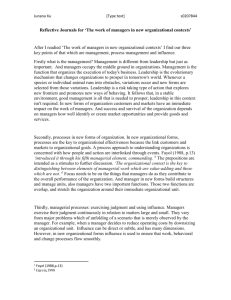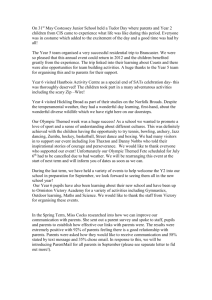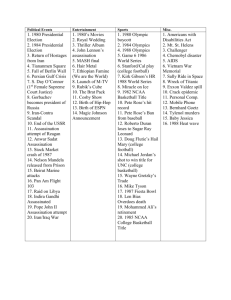sport stars & drugs
advertisement
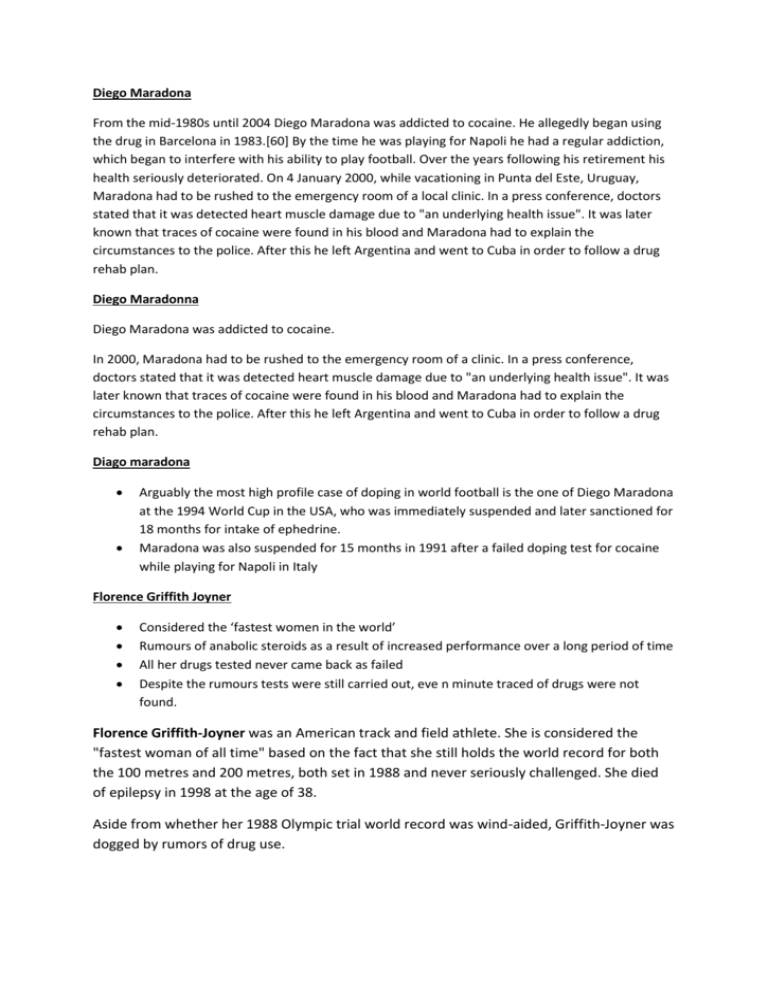
Diego Maradona From the mid-1980s until 2004 Diego Maradona was addicted to cocaine. He allegedly began using the drug in Barcelona in 1983.[60] By the time he was playing for Napoli he had a regular addiction, which began to interfere with his ability to play football. Over the years following his retirement his health seriously deteriorated. On 4 January 2000, while vacationing in Punta del Este, Uruguay, Maradona had to be rushed to the emergency room of a local clinic. In a press conference, doctors stated that it was detected heart muscle damage due to "an underlying health issue". It was later known that traces of cocaine were found in his blood and Maradona had to explain the circumstances to the police. After this he left Argentina and went to Cuba in order to follow a drug rehab plan. Diego Maradonna Diego Maradona was addicted to cocaine. In 2000, Maradona had to be rushed to the emergency room of a clinic. In a press conference, doctors stated that it was detected heart muscle damage due to "an underlying health issue". It was later known that traces of cocaine were found in his blood and Maradona had to explain the circumstances to the police. After this he left Argentina and went to Cuba in order to follow a drug rehab plan. Diago maradona Arguably the most high profile case of doping in world football is the one of Diego Maradona at the 1994 World Cup in the USA, who was immediately suspended and later sanctioned for 18 months for intake of ephedrine. Maradona was also suspended for 15 months in 1991 after a failed doping test for cocaine while playing for Napoli in Italy Florence Griffith Joyner Considered the ‘fastest women in the world’ Rumours of anabolic steroids as a result of increased performance over a long period of time All her drugs tested never came back as failed Despite the rumours tests were still carried out, eve n minute traced of drugs were not found. Florence Griffith-Joyner was an American track and field athlete. She is considered the "fastest woman of all time" based on the fact that she still holds the world record for both the 100 metres and 200 metres, both set in 1988 and never seriously challenged. She died of epilepsy in 1998 at the age of 38. Aside from whether her 1988 Olympic trial world record was wind-aided, Griffith-Joyner was dogged by rumors of drug use. In 1988, Joaquim Cruz, Brazilian gold medalist in the 800 meters at the 1984 Los Angeles Olympics claimed that Griffith-Joyner's times could only have been the result of using steroids or other performance-enhancing drugs, that her physique had changed dramatically in 1988 (showing marked gains in muscle mass and definition), and that her performance had improved dramatically over a short period of time Before the 1988 season, Griffith Joyner's best 100 metre time was 10.96 seconds. In 1988 she improved that by 0.47 seconds (or 0.35 sec for the non-wind aided time). Similarly, her pre-1988 best at 200 meters was 21.96 In 1988 she improved that by 0.62 seconds to 21.34, another time which has not been approached. Griffith-Joyner attributed the change in her physique to new health programs Al Joyner replaced Bob Kersee as her coach, and changed her training program to include more lower body strength training exercises like squats and lunges. She retired from competitive track and field after her 1988 Olympic triumph. GriffithJoyner was tested during competition and did not fail any drug tests. After her death in 1998, Prince Alexandre de Merode, chairman of the International Olympic Committee's medical commission claimed that Joyner was singled out for rigorous drug testing during the 1988 Seoul Olympics because of steroid rumors. Manfred Donike - expert on drugs in sports, failed to discover even minute traces of banned substances during the testing. Griffith-Joyner's supporters claimed that the autopsy cleared her of allegations that she used performance-enhancing drugs. Autopsy records showed that she did not die from drugs or banned substances and that tissue and organ tests revealed none of the changes associated with recent steroid use. Florence Griffith Joyner – PED’s >‘Fastest women alive’ >Anabolic Steroids >Was never proven >Performance drastically improved >'I'd be a fool to take drugs.' Dwaine Chambers and performance enhancing drugs He tested positive for the steroid THG in October 2003. He was banned from all competition for two years and received a lifetime Olympic ban. He was also stripped of all his Olympic medals. He was also stripped of his relay gold medal which also cost his team mates, Darren Campbell, Marlon Devonish and Christian Malcolm their gold medals. During his ban he unsuccessfully tempted to play American Football. Dwaine Chambers Steroids 2 year ban Banned for life from Olympics Stripped of medals Also admitted to taking; Epitestosterone cream HGH EPO Insulin lispro Modafinil Liothyonine




